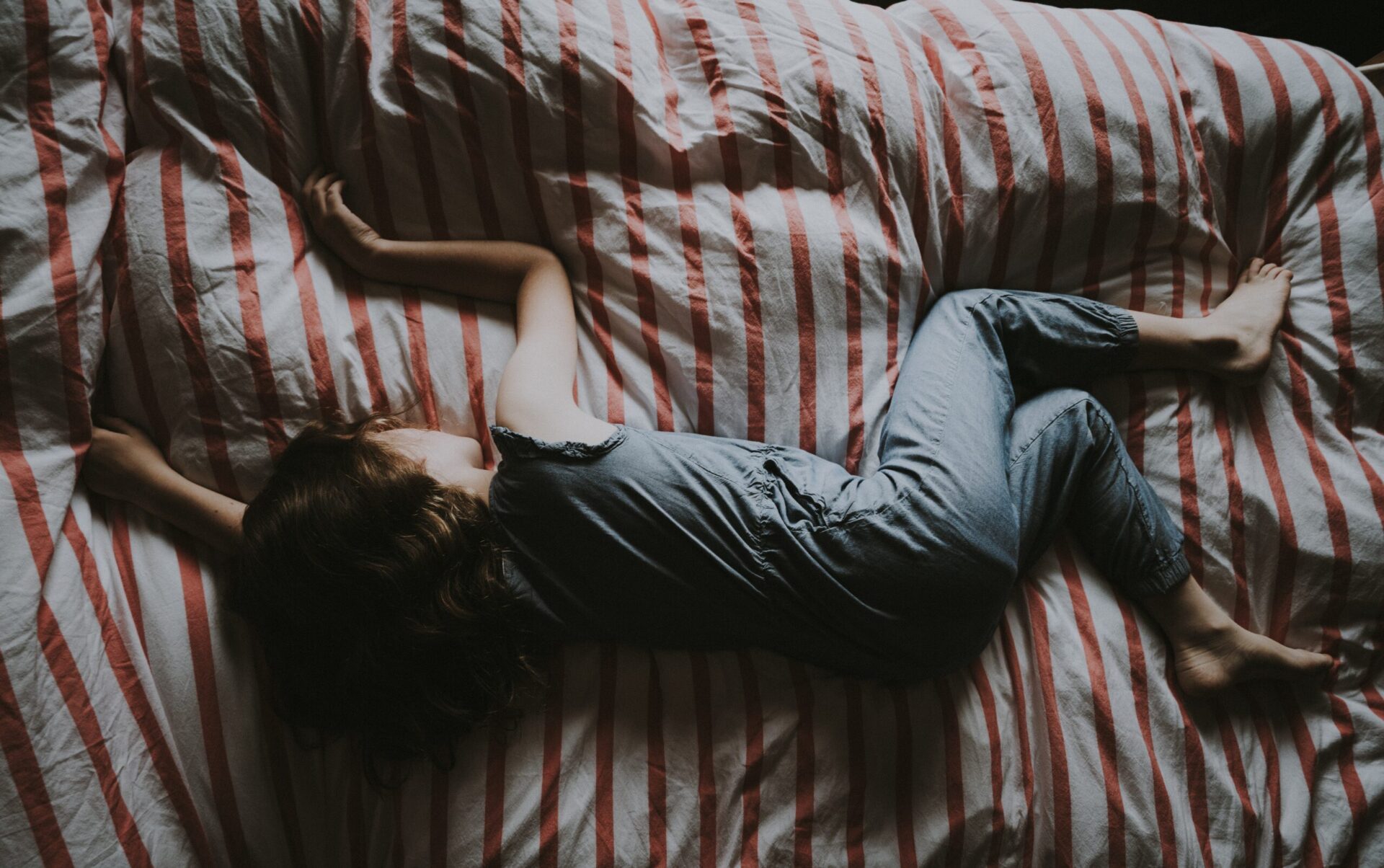
I saw a figure behind my curtain. He jumped on my chest. I thought I entered another dimension. And the most terrifying thing is that I couldn’t scream. She was very lively.
Source: Unsplash
I was a teenager when this first happened. It was early in the morning, several hours before I had to get up and get out of bed to go to school. I got up and tried to roll over in bed but my body wouldn’t let me. I couldn’t move. I was completely paralyzed.
Even though my mind had awakened, my muscles were still… asleep. The walls around me felt like they were getting closer. I panicked. 15 seconds later it’s all over.
Then I found a name for what I went through. sleep paralysis. It is a common nocturnal condition, in which the body remains temporarily paralyzed while part of the brain is awake.
After that scary incident, it became a recurring seizure every two or three nights. The more that happened, the less terrifying it became. In the end it was more than an inconvenience.
But sleep paralysis can have an even greater impact on life. Some are accompanied by terrifying hallucinations.
Now 24, the girl says this first happened to her when she was 18. “I woke up and couldn’t move. I saw a figure that looked like a gremlin behind my curtain. It jumped on my chest. I thought I had entered another dimension. And the scariest thing was that I couldn’t scream. It was so vivid, so real.”
Others suffer from hallucinations. Demons, ghosts, aliens, menacing invaders, dead relatives. They see parts of their bodies in the air. Or clones of themselves standing next to their beds. Some see angels.
Researchers believe that these hallucinations may have fueled the belief in witches in early modern Europe and could even explain some modern allegations of alien abduction.
Scientists believe sleep paralysis has always existed. But until recently it wasn’t researched much. “This phenomenon has been overlooked … but in the past 10 years there has been a growing interest,” says Baland Jalal, a sleep researcher at Harvard University who in 2020 completed the first clinical trial of different approaches to treat sleep paralysis.
Until recently, there was little agreement about how many people suffer from sleep paralysis, as studies have been spotty and with little consistency between methods.
In 2011, clinical psychologist Brian Sharpless reviewed data from 35 studies over five decades. In total, they involved more than 36,000 volunteers. Sharpless found that sleep paralysis was more common than previously thought, with nearly 8% of adults claiming to have experienced it at some point. This percentage is much higher among college students (28%) and mentally ill (32%).
After experiencing the condition, some gravitate towards the supernatural or even paranormal explanations.
But things could be simpler.
At night, our body goes through four stages of sleep. The last stage is called rapid eye movement or “REM” sleep. This is the moment we dream about. During REM, your brain paralyzes your muscles, possibly to physically prevent you from carrying out your dreams and hurting yourself. But sometimes — and scientists are still not sure why — the sensory part of your brain prematurely exits REM.
This makes us feel alert. But the lower part of the brain remains in REM and still sends neurotransmitters to paralyze muscles.
You wake up mentally and cognitively – but physically you are still paralyzed.
“For most people, this is a strange thing that they live with,” says Colin Espy, MD, professor of sleep medicine at the University of Oxford.
“It’s a bit like sleepwalking — most people who sleepwalk never go to the doctor.”
Sharpless’ research found that between 15% and 44% of people with sleep paralysis experience “clinically significant distress” as a result.
Problems usually arise from how we respond to sleep paralysis. Patients obsess during the day about when the next seizure will occur. The worst thing is that it leads to panic attacks.
In more severe cases, sleep paralysis can be a sign of a latent sleep condition — a more serious sleep condition in which the brain is unable to regulate sleep-wake patterns, causing the person to fall asleep at inappropriate times.
Doctors say paralysis is more likely when you’re sleep-deprived because the structure of your sleep…is fragmented. Some patients also find that it is more likely to occur when they are lying on their back, although the explanation for this is not clear.
The most common approach to sleep paralysis is education: Patients are simply taught about the science behind the condition and reassured that they are not in danger. Sometimes a form of meditation therapy is used. The goal is to reduce the patient’s sleep anxiety and train him to stay calm when sleep paralysis occurs.
In more severe cases, the use of medications is considered.
The most dramatic and memorable episodes of sleep paralysis are usually those accompanied by intense hallucinations. These night visions are usually scary, but scientists also think they can tell us fascinating things about the human brain.
When you enter sleep paralysis, the motor cortex of the brain begins to send signals to the body telling it to move. But the muscles are paralyzed, so the brain receives no feedback signal in return.
The brain “fills in the blank,” creating its own explanation for why muscles can’t move. This is why many hallucinations involve a creature sitting on your chest or body down.
Our brains invent dramatic narratives in an attempt to find meaning in everyday life.
Some hallucinations are difficult to explain – and even outright strange
Scientists, for example, have heard some talk of a hideous black cat and a man being suffocated by plants.
Mexicans report a “dead man” lying on their chest, while in Saint Lucia they speak of “cocmas”, the spirits of unbaptized babies, who suffocate them in their sleep. Turks describe “Karabasan” – a mysterious and fantastical creature. Italians often have hallucinations about witches.
But the researchers also found a cultural divide when it comes to sleep paralysis.
Egyptians were more likely than Danes to experience sleep paralysis (44% compared to 25%) and were more likely to support a supernatural explanation. The Egyptian volunteers, who believe in ghosts and demons, also spent longer periods paralyzed in each episode.
Scientists believe that fear of the paranormal makes people more afraid of sleep paralysis, and this anxiety makes this phenomenon more likely to occur.
“When you have anxiety and stress, your sleep structure will become more fragmented, so you are more likely to develop sleep paralysis,” say the scientists.
Suppose your grandmother tells you, “A creature comes at night and attacks you.” Lo and behold, during REM sleep [αισθάνεσαι]”Oh, something is wrong, I can’t move, the creature is here.”
“It seems that culture can actually create this dramatic effect.”
Source: BBC

“Avid problem solver. Extreme social media junkie. Beer buff. Coffee guru. Internet geek. Travel ninja.”





More Stories
Meta opens Quest OS to other hardware manufacturers – Meta
Denmark: An 1,800-year-old miniature of Alexander the Great was found
Io: Flying over a lava lake on Jupiter's nightmarish moon